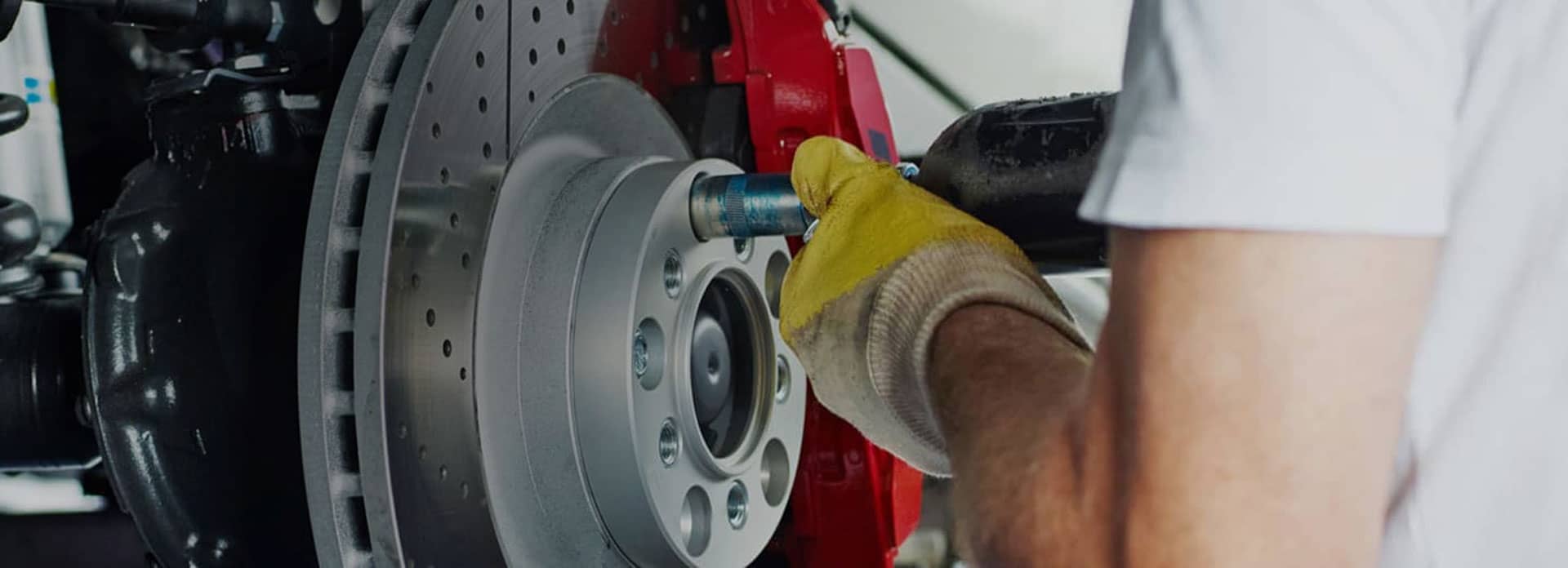
AUTONET TV
Archive for February 2022No Fountain of Youth (Aging Tires)Posted February 27, 2022 10:00 AMCan you think of anyone who enjoys aging? Wrinkles where you don't want them, gray hair, eyes that won't focus any more, no stamina. Believe it or not, your tires age, too, and they don't get better the older they get. And here's the important thing to know, even if they can still pass a tread depth test, they may simply be too old to be safe Here's the best way to understand this. Have you ever found an old deck of playing cards with a rubber band wrapped around them? Try stretching the rubber band. SNAP! It's all cracked and brittle. And you haven't stressed that rubber one bit since the time you put them in that drawer. Now you know what's happening to your tires. Rubber ages. Just like us, the day we come into the world, we start to go downhill (no pun intended). Oh, engineers are able to make a tire last longer than ever before. But that gas that keeps us alive—oxygen—seems to love to chemically mix with some components in rubber. Oxidation causes rubber to become hard and brittle. The rubber band test. Is there an age test that can tell you when a tire is tool old to roll? Well, not really. They don't all age the same. Hot climates can make tires wear out more quickly. Some experts say a tire can last up to 10 years but should be inspected every year after the age of five. Others say tires should have an expiration date at six years old. Since no one would ever ask a tire its age, how do you know how old one is? Believe it or not, tires made after the year 2000 have a date code stamped on either the inside or the outside of the sidewall. It's a four-digit numbers; the first two tell you the week, the second two tell you the year. So if it has the number 1916, it was made in the 21st week of 2016. Another way to find out if your tires still have enough life in them is to have your vehicle service facility inspect them. They look for signs of age, such as developing cracks in the rubber, the condition of the sidewalls and, of course, that old standby: tread. If it's time to "retire" them, discuss options with your service advisor.
The Flat Fix that Fits (Tire Repairs)Posted February 20, 2022 8:56 AMCan you think of anyone who likes getting a flat tire? Of course not. But when one of your tires winds up with a flat or leak, whether it be from things like hitting a curb, running over a nail or picking up a sharp stone, it's time to have someone who knows what they're doing take care of it. If you're thinking you'd like to avoid having to buy a new tire, you wonder if a patch or plug will suffice. It depends where the puncture is and how big the hole is. Most tire experts will say if the hole in the tire is less than ¼ of an inch or 6 mm, a patch can work. But a patch likely won't work if the compromised part of the tire is on its shoulder or sidewall. Here's why. The shoulder of a tire is the part between the sidewall and tread and it's usually rounded. It's under a lot of pressure, more than even the sidewalls. And because of that curved shape, it's hard to get a patch or plug to hold. The sidewall is the side of the tire. Sidewalls flex a lot when you drive, and the strain can cause a patch or plug to loosen up. A weak spot in a sidewall is much more likely to fail and cause a blowout. So if you have damage in the sidewall or shoulder, that tire is a good candidate for replacement, not repair. If you have a cut or gash in your tire, it's possible the cords that strengthen your tire have also been cut. That weak spot can spell trouble, and this type of damage usually means you should get a new one. Your service advisor can tell you what the appropriate action is to take when you have tire damage. You may be able to get good results with a patch, or you may have to replace one or more tires. Your safety is riding on them. TJ's Auto Center Inc. Going (Lug) Nuts (Lug Nut Replacement)Posted February 13, 2022 10:44 AMHere's a part of your vehicle you probably don't think about much: lug nuts. They're what fasten your wheels onto your axles. Pretty important, right? In order to take the wheels off your vehicle to service the brakes, rotate the tires, etc., the lug nuts have to be in good shape so a wrench will grip them tightly. Because lug nuts are on your wheels, they are exposed to all the elements of the road (salt, water, grime) and really take a beating. Unfortunately, some manufacturers have made them out of two different metals. Underneath is the working part of the lug nut, made of steel. On top is the decorative (the "good looking") part, made out of chrome, stainless steel or aluminum. After a while, the steel part begins to corrode and expands. That changes the shape of the outer cap, sometimes rounding off the hexagonal edges and making it hard (if not impossible) to either loosen or tighten the lug nuts since the wrench won't fit any more. The reason that's so important is those lug nuts must be functional, especially if you find you have a flat tire somewhere on the road. If the wheel can't come off to be swapped with a spare, it leaves few options, one of which is your vehicle may have to be towed. All that for corroded lug nuts! When you take your vehicle in for service, the technician who works on it keeps an eye on many things, especially if he or she is removing wheels. It's not unusual for your service advisor to recommend you replace several lug nuts at once since some corrode at a different rate than others. Your repair facility is trying to help you avoid driving a vehicle that has wheels that can't easily be taken off when they need to be. The good news is there are one-piece lug nuts that don't have the problem the two-piece lug nuts have, so replacing them could eliminate that from happening again any time soon. And that's not "nuts" at all. TJ's Auto Center Inc. Take Charge! (Battery Testing)Posted February 6, 2022 10:10 AMOK, so you probably take your vehicle's battery for granted. Turn the key or push a button and it starts right up. During times of warmer weather, you probably think your battery can take it easy. But it may surprise you to learn that hot weather can be much harder on a vehicle's battery than cold. So it's wise to know what condition your battery is in BEFORE you find out the hard way—being stranded by a dead battery. Your vehicle's battery won't last forever; an average battery will last 3-5 years. When's the last time yours was replaced? You probably have no idea. Your vehicle will usually give you some hints that it's in need of attention. See if any of these are familiar:
Even if there are no signs your battery is on its last legs, it's a good idea to have it periodically checked at your vehicle service facility, at least once a year. A technician will check the date it was made (it's on the battery's case). They'll inspect your battery, cables and connections, looking for corrosion, bulges in the battery or any other abnormal signs. Using special diagnostic equipment, the technician can run some tests on your battery and vehicle's electrical systems. They can measure how fully charged your battery is and how much potential it has to hold a charge. Then, your service advisor will tell you how much more life to expect from your battery or recommend it be replaced. It you need a new one, your service advisor can recommend options for you. Important factors include brand, warranty, where the terminals are on the battery, the ability to handle different cranking loads and temperature ranges. Bet you didn't know vehicle batteries can be that different! TJ's Auto Center Inc. | ||
SearchArchiveJune 2010 (71)July 2010 (4) August 2010 (4) September 2010 (4) October 2010 (4) November 2010 (4) December 2010 (4) January 2011 (4) February 2011 (4) March 2011 (4) April 2011 (5) May 2011 (5) June 2011 (4) July 2011 (4) August 2011 (5) September 2011 (4) October 2011 (4) November 2011 (5) December 2011 (4) January 2012 (5) February 2012 (2) March 2012 (5) April 2012 (4) May 2012 (5) June 2012 (4) July 2012 (5) August 2012 (4) September 2012 (4) November 2012 (1) December 2012 (2) March 2013 (1) April 2013 (3) May 2013 (2) October 2013 (5) November 2013 (2) January 2014 (2) February 2014 (3) March 2014 (1) July 2014 (4) August 2014 (7) September 2014 (4) October 2014 (5) November 2014 (4) December 2014 (5) January 2015 (4) February 2015 (4) March 2015 (4) April 2015 (4) May 2015 (3) June 2015 (5) July 2015 (2) September 2015 (2) October 2015 (4) November 2015 (5) December 2015 (2) February 2016 (2) March 2016 (4) April 2016 (4) May 2016 (5) June 2016 (4) July 2016 (5) August 2016 (4) September 2016 (4) October 2016 (5) November 2016 (4) December 2016 (4) January 2017 (5) February 2017 (4) March 2017 (4) April 2017 (3) May 2017 (5) June 2017 (4) July 2017 (5) August 2017 (4) September 2017 (2) October 2017 (5) November 2017 (4) December 2017 (3) January 2018 (5) February 2018 (4) March 2018 (4) April 2018 (4) May 2018 (4) June 2018 (4) July 2018 (5) August 2018 (4) September 2018 (5) October 2018 (3) March 2019 (4) May 2019 (2) June 2019 (5) July 2019 (2) August 2019 (1) September 2019 (4) October 2019 (5) November 2019 (4) December 2019 (5) January 2020 (5) February 2020 (4) March 2020 (5) April 2020 (1) May 2020 (2) July 2020 (1) August 2020 (5) September 2020 (4) October 2020 (4) November 2020 (5) December 2020 (4) January 2021 (6) February 2021 (4) March 2021 (4) April 2021 (4) May 2021 (5) June 2021 (4) July 2021 (4) August 2021 (5) September 2021 (3) October 2021 (5) November 2021 (4) December 2021 (4) January 2022 (6) February 2022 (4) March 2022 (4) April 2022 (4) May 2022 (5) June 2022 (4) July 2022 (5) September 2022 (4) October 2022 (5) November 2022 (4) December 2022 (4) January 2023 (5) February 2023 (4) March 2023 (4) April 2023 (5) May 2023 (4) June 2023 (4) July 2023 (5) August 2023 (4) September 2023 (3) October 2023 (2) January 2024 (1) February 2024 (4) April 2024 (1) May 2024 (3) June 2024 (5) July 2024 (4) August 2024 (4) September 2024 (5) October 2024 (4) November 2024 (4) December 2024 (4) | CategoriesWinter Prep (6)Tire Pressure Monitoring System (1)Shocks and Struts (4)Engine Air Filter (4)Warranty (1)Headlamps (6)Alignment (9)Check Engine Light (5)Maintenance (19)Parts (1)Differential Service (3)Cabin Air Filter (3)Steering (12)Fluids (8)Cooling System (10)Tires and Wheels (6)Tire Rotation and Balancing (4)Drive Train (5)Exhaust (11)Older Vehicles (2)Automotive News (4)Wheel Bearings (2)Fuel System (10)Service Intervals (3)Service Standards (5)Air Conditioning (10)Inspection (5)Battery (13)Brakes (17)Keys to a long lasting vehicle (2)Timing Belt (5)Fuel Economy (8)Transmission (5)Alternator (7)Auto Safety (5)Safety (2)What Customers Should Know (83)Fuel Saving Tip: Slow Down (2)Dashboard (1)Windshield Wipers (3)Oil Change (9)Customer Detective Work (1)Shocks & Struts (3)Safe Driving (1)Water Pump (2)Tires (12)Suspension (2)TPMS (3)Spark Plugs (2)Winter Tires (1)Fuel Pump (1)Brake Service (6)PCV Valve (1)Trip Inspection (2)Transfer Case Service (1)Fuel Filter (1) | |

OUR REVIEWS


Howard L.The business always does a great job and takes care of him. They are very polite.











